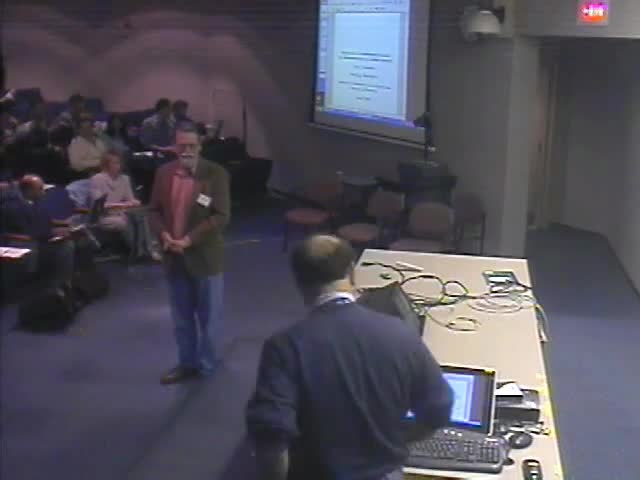Symmetries of a Mathematical Model for Deformation Noise in Realistic Biometric Contexts
Presenter
April 5, 2006
Keywords:
- Special domains
MSC:
- 32A07
Abstract
By the "realistic biometric context" of my title, I mean
an investigation of well-calibrated images from
a moderately large sample of organisms in order to evaluate
some nontrivial hypothesis about systematic form-factors
(e.g., a group difference). One common approach to
such problems today is "geometric morphometrics," a short name
for
the multivariate statistics of landmark location data.
The core formalism here, which handles data schemes that
mix discrete points, curves, and surfaces, applies otherwise
conventional linear statistical modeling strategies to
representatives of equivalence classes of these
schemes under similarity transformations or relabeling maps.
As this tradition has matured, algorithmic successes involving
statistical
manipulations and the associated diagrams have directed our
community's attention away from a serious underlying problem:
Most biological processes operate not on the submanifolds of
the data
structure but in the embedding space in-between. In that
context
constructs such as diffeomorphism, shape distance, and image
energy
are mainly metaphors, however visually compelling, that may
have no particular scientific authority when some actual
biometrical hypothesis is being seriously weighed.
Instead of phrasing this as a problem in the representation of
a signal, it may be useful to recast the problem as that of a
suitable
model for noise (so that signal becomes, in effect, whatever
patterns rise
above the amplitude of the noise). The Gaussian model of
conventional statistics
can be derived as an expression of the symmetries of a
plausible physical model
(the Maxwell distribution in statistical mechanics), and it
would be
nice if some equally compelling symmetries could be invoked to
help us formulate
biologically meaningful noise models for deformations.
We have had initial success with a new model of
self-similar isotropic noise
borrowed from the field of stochastic geometry. In this
approach, a deformation
is construed not as a deterministic mapping but as a
distribution of mappings given by an intrinsic random process
such that the plausibility of a meaningful focal structural
finding is the same
regardless of physical scale. Simulations instantiating this
process are graphically quite compelling--their selfsimilarity
comes
as a considerable (and counterintuitive) surprise--and yet as
a
tool of data analysis, for teasing out interesting regions
within an
extended data set, the symmetries (and their breaking, which
constitutes
the signal being sought) seem quite promising.
My talk will review the core of geometric morphometrics
as it
is practiced today, sketch the deep difficulties that arise in
even
the most compelling biological applications, and then
introduce the
formalisms that, I claim, sometimes permit a systematic
circumvention of
these problems when the context is one of a statistical data
analysis of a serious scientific hypothesis.
This work is joint with K. V. Mardia.
